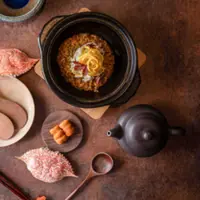The open kitchen offers a peek into the means and methods behind Chin's diaspora cooking. — RESTAURANT SHU
In what seems like the strangest anomaly, Malaysian chef Wong Chin Hua, 37, never actually lived in Malaysia until the Covid-19 pandemic.
“I am Malaysian but I was born in Singapore and grew up in Singapore because my parents worked there. When Covid-19 happened, I moved to Malaysia for the first time in my life. I didn’t really have a choice at that point because I didn’t have a visa to work anywhere else so Malaysia was my only option. And I ended up meeting some amazing people and making a home for myself here,” he says.





